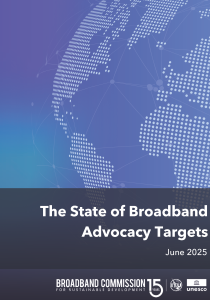The competition for capital
There is competition for capital, and that competition is global. Dollars naturally flow to projects where the returns on investment are highest, where the investments meet the least resistance. Canada has a capital funding problem – and it isn’t just telecom.
A recent article about pipeline investment provides an example in a critical Canadian infrastructure sector. Canadian pipeline giants Enbridge and TC Energy are investing in the United States, despite the rhetoric from politicians pushing for “nation-building infrastructure” on the north side of the border.
François Poirier, the chief executive of TC Energy, said the company’s returns in the U.S. “are meaningfully higher than in Canada,” which means it will focus on the much larger market, despite hopes for a pipeline project on its home turf.
“Canada gas has to compete for capital with the other business units in the company,” Poirier said this week during a conference call on quarterly earnings.
“We are going to be allocating capital predominantly in the U.S. until competitive projects in other jurisdictions present themselves that compel us to allocate capital elsewhere.”
That has a familiar ring to it for those who follow the Canadian telecom sector. The need for government to ensure there is a friendly climate for investment is a theme that has inspired more than 100 entries on my blog.
Regulatory stability not only makes sense from a policy perspective; it has recently been determined by the courts to be a legal imperative. After more than a decade-long court battle, Ottawa has been ordered to repay hundreds of millions of dollars to Mobilicity investors after Industry Canada unexpectedly changed its spectrum transfer rules.
At its core, this action is about the transferability of spectrum licenses. But significantly, it is also about the extraordinary and unusual conduct of Government officials with respect to the Mobilicity spectrum licenses in particular.
The Mobilicity affair, perhaps one of the most underplayed telecom policy stories in Canada, was conducted during the previous Conservative government. But independent of who is in power, we have seen too many regulatory and policy changes that ignore the impact on investment decisions. With thinner margins and tighter capital, the impacts of unpredictable regulatory environments are amplified.
Canadian telecom business units have competition for capital, competing with other business units in the company, or globally in the sector. For that matter, investment dollars will simply exit the telecom sector if the opportunities for financial returns are easier to find elsewhere.
In pipelines, and in telecom, the story is similar. It is going to take more than political rhetoric to stimulate investment in critical infrastructure, especially when global trade markets are undergoing such disruptive forces driven by the US administration.
How do we ensure Canada’s private sector industry leaders – in both telecom and energy – continue to find the appropriate incentives to invest in critical infrastructure? Predictably, a stable regulatory and policy environment is an important prerequisite for investment.

 A year ago
A year ago 